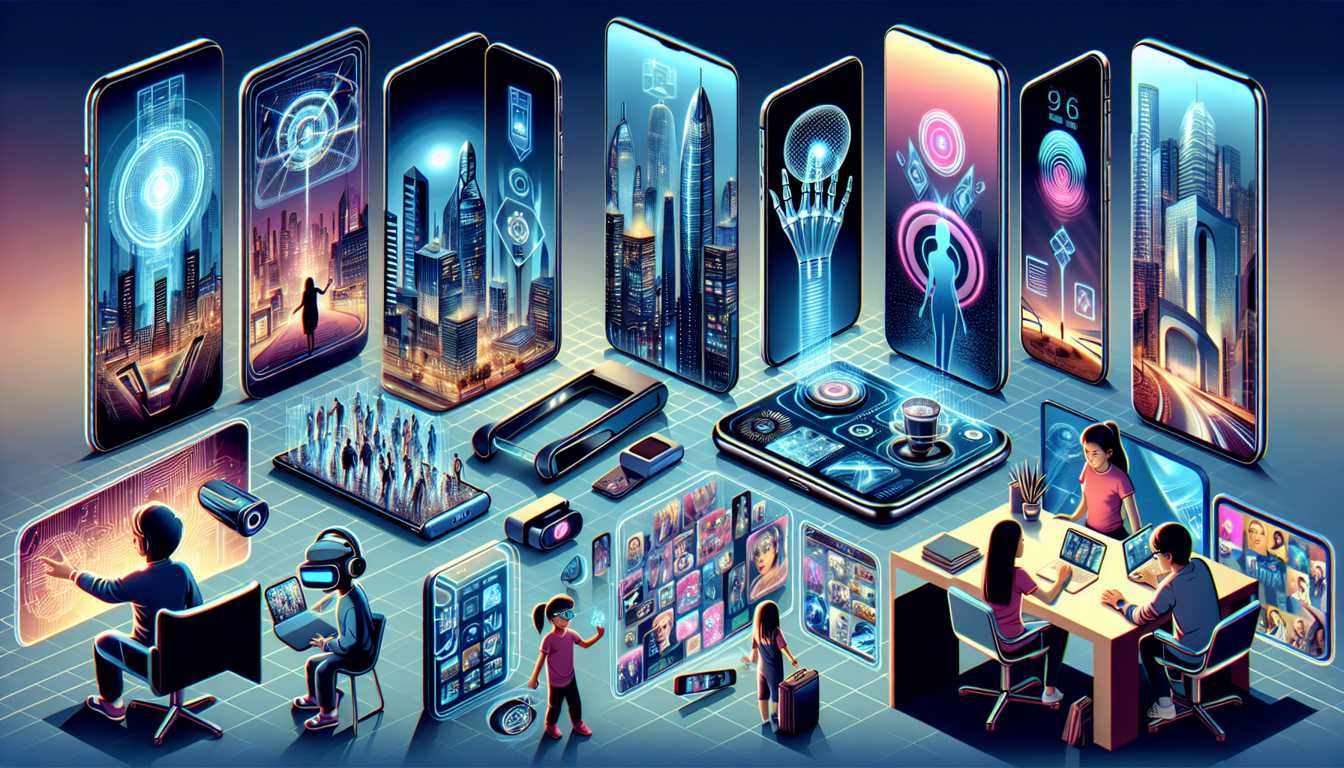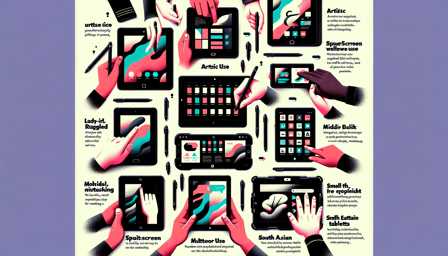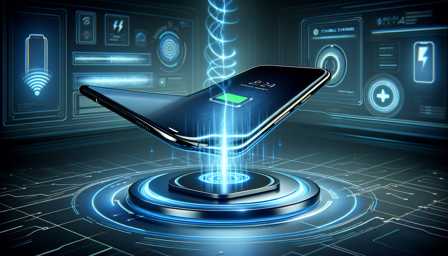
The Future of Smartphones: Emerging Trends and Predictions for the Next Decade
The smartphone industry is poised for a transformative decade. With rapid technological advancements, changing consumer demands, and global challenges, the landscape of smartphones is evolving. This comprehensive article delves into the emerging trends and predictions for the next decade, offering insights into how these developments will shape our interaction with mobile technology.
Evolution of Display and Design
Foldable and Rollable Screens
The emergence of foldable phones, like the Samsung Galaxy Z Fold and Huawei Mate X, is just the beginning. The next decade will likely see these devices becoming more affordable, durable, and efficient. Rollable screens could also become a reality, offering unprecedented portability and screen size variability.
Under-Display Camera Technology
Initiated by companies like ZTE with their Axon 20, under-display camera technology is set to revolutionize smartphone aesthetics, offering uninterrupted display space without compromising selfie camera quality.
E-ink and Dual-Screen Phones
E-ink technology, known for its low power consumption and readability in sunlight, may find more applications in smartphones. Dual-screen phones, like the Surface Duo, offer multitasking capabilities and could become more mainstream with enhanced software support.
Enhanced Connectivity
5G Expansion and the Inception of 6G
While 5G deployment is ongoing, research into 6G technology promises even faster data speeds and lower latency, potentially revolutionizing mobile internet usage.
Advanced Wi-Fi and Bluetooth Technologies
Wi-Fi 6E and future iterations will provide faster, more reliable connections. Enhanced Bluetooth technology will improve connectivity between a wide range of devices and IoT applications.
Battery Technology and Charging Innovations
Graphene and Solid-State Batteries
Graphene and solid-state batteries could offer higher capacities, faster charging times, and improved safety over traditional lithium-ion batteries.
Wireless Charging Evolution
The future might see over-the-air wireless charging becoming practical, alongside advancements in solar charging technologies, pushing smartphones towards greater energy autonomy.
Processing Power and Storage Innovations
Next-Generation Chipsets
The evolution of chipsets will focus on AI and machine learning optimizations, energy efficiency, and handling advanced graphics for AR and VR applications.
Cloud Integration and Quantum Computing
Enhanced cloud services will reduce the dependence on physical storage. Quantum computing, though in its infancy, might start influencing smartphone computing power towards the end of the decade.
Artificial Intelligence and Machine Learning
Deep Personalization
AI and ML will deeply personalize user experiences, from adaptive interfaces to context-aware computing, making smartphones even more intuitive and user-friendly.
Advanced Security Features
Future smartphones might incorporate more advanced biometrics like heart-rate pattern recognition, alongside traditional methods like fingerprints and facial recognition for enhanced security.
Augmented Reality (AR) and Virtual Reality (VR)
AR and VR Integration
Smartphones will play a pivotal role in mainstreaming AR and VR, offering new forms of interactive content, gaming, and immersive educational experiences.
Real-World Applications
AR and VR will find practical applications in various sectors like healthcare, real estate, and retail, offering virtual try-ons, property tours, and more.
Sustainable and Ethical Manufacturing
Eco-friendly Practices
The shift towards sustainable manufacturing will involve using recycled materials, reducing carbon footprints, and implementing environmentally friendly practices.
Device Longevity and Repairability
The industry might focus on producing longer-lasting devices with easier repairability, prompted by consumer demand and regulatory pressures.
Digital Inclusion and Ethical Considerations
Bridging the Digital Divide
Efforts will increase to make advanced smartphone technologies accessible to underprivileged populations, aiming to bridge the global digital divide.
Privacy and Ethical Challenges
With increasing capabilities, smartphones will pose significant privacy and ethical challenges. Manufacturers and policymakers will need to address issues around data collection, surveillance, and user rights.
Health and Wellness Integration
Advanced Health Monitoring
Smartphones will likely become more involved in health monitoring, featuring sensors for vitals like blood pressure, glucose levels, and oxygen saturation. This integration can lead to more proactive health management and telemedicine applications.
Mental Health and Digital Wellbeing
As awareness of digital wellbeing grows, smartphones may incorporate features to promote mental health, such as usage monitoring, stress management tools, and features encouraging digital detox.
User Interface and Experience
Gesture and Voice Control
The evolution of user interfaces will see more sophisticated gesture and voice controls, reducing the reliance on touchscreens and enhancing hands-free usability.
Haptic Feedback and Sensory Enhancements
Advanced haptic feedback technologies will provide more immersive and tactile experiences, potentially simulating different textures or temperatures.
Expansion of IoT and Smart Ecosystems
Seamless Integration with IoT
Smartphones will become the central control units for the expanding Internet of Things (IoT), allowing seamless interaction with smart home devices, vehicles, and other connected gadgets.
Smart Ecosystems and Cross-Device Synergy
The development of smart ecosystems will enable smartphones to work in harmony with other devices, from laptops and tablets to smartwatches and AR glasses, creating a cohesive and interconnected user experience.
Software and Ecosystem Developments
Operating System Innovations
Operating systems like Android and iOS will evolve to support the expanding capabilities of hardware, offering more robust, secure, and user-friendly experiences.
App Ecosystem and Software Services
The app ecosystem will expand with the development of new software services, particularly in areas like AR/VR, AI, and cloud computing, offering a wider range of functionalities and services to smartphone users.
New Business Models and Market Dynamics
Subscription-based Models
The industry might see a shift towards subscription-based models for both hardware and software, offering users more flexibility and up-to-date technology.
Changing Market Dynamics
Emerging markets will play a more significant role in shaping the smartphone industry, with companies potentially tailoring products to meet the unique needs of these regions.
Conclusion
The next decade will witness unparalleled advancements in the smartphone industry, profoundly impacting how we interact with technology and each other. While these innovations promise exciting possibilities, they also bring challenges that need to be addressed responsibly. Balancing innovation with sustainability, privacy, and inclusivity will be key to ensuring that the future of smartphones benefits everyone.



